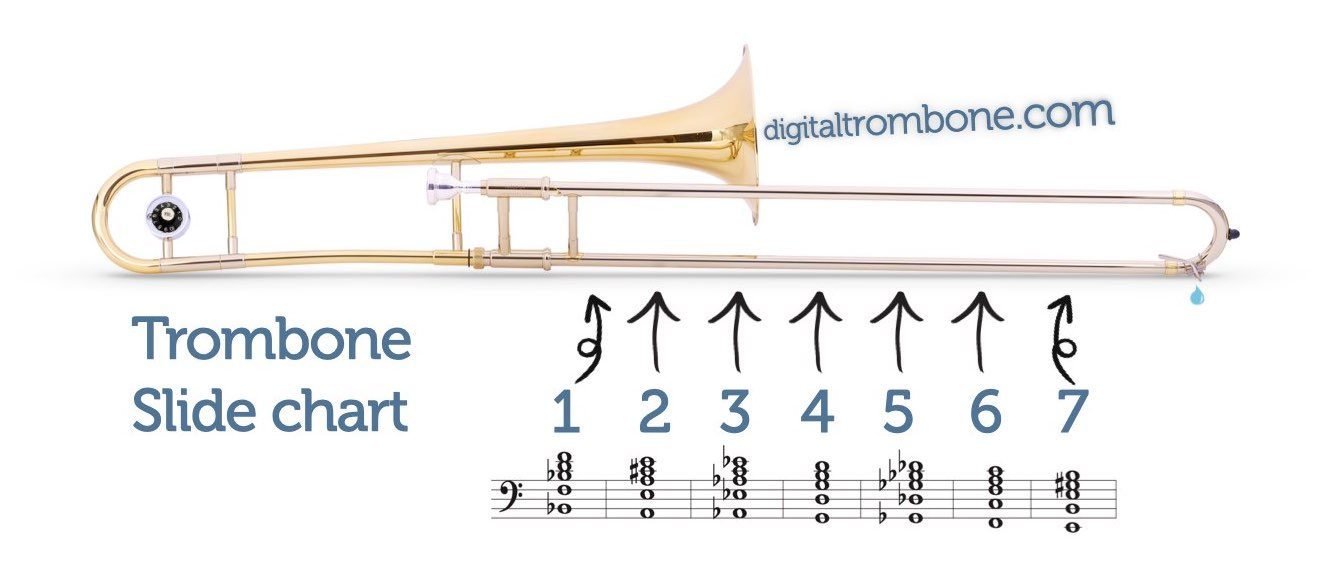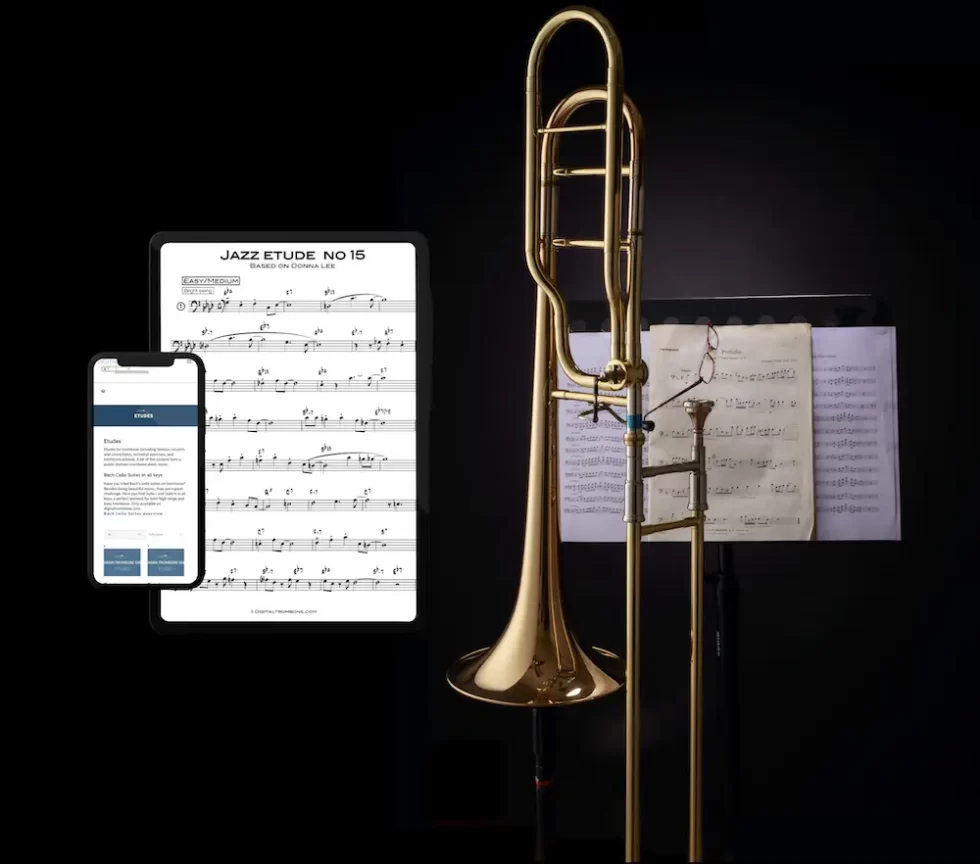Trombone instrument facts

What is a trombone?
The trombone instrument dates back to the 15th century. Back then it was called a sackbut. Trombones are in the brass instruments family and produce a deep, rich sound. Due to the hand slide, the trombone is the only brass instrument that can play a true glissando. They are to be found in orchestras and jazz bands. Read more in-debt about the trombone at Wikipedia.
The trombone is a very versatile instrument and can be used in most musical genres, ranging from classical to jazz, and everything in between.
Popular trombone instrument brands include Bach, Conn, King, Shires, Rath, and Yamaha. These brands are all well-known for their quality instruments and offer a wide range of trombones. There are several other trombone brands available, and it is important to do your research to find the brand that is right for you. In general – if a trombone feels nice and easy to play, you are on to something.
The most common tuning for trombones is concert pitch, and sheet music is written in either bass clef or tenor clef. Alto trombones use the alto clef.
There are six main types of trombones:
- Alto trombone
- Tenor trombone (small bore)
- Tenor trombone (large bore)
- Bass trombone
- Contrabass trombone (a rare beast)
- Valve trombone (valves instead of slide)
The alto trombone has an Eb as the fundamental in the first slide position, tenor and bass trombones have a Bb, while the contrabass trombone has an F as fundamental.
The trombone slide
The trombone slide is a vital part of the instrument and is responsible for changing the pitch of the instrument. The slide is made up of several different parts, including the inner slide, the outer slide (the hand slide). The inner slide is the part of the slide that is fixed the instrument, and the outer slide is the part that is held and moved by the player. The slide is moved by the player’s hand and is responsible for changing the pitch of the instrument. The longer you make the slide, the lower the pitch you can play. Take a look at this complete trombone slide chart to learn more.
The trombone bell
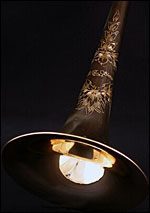
The trombone bell is responsible for amplifying the sound of the instrument. The bell is made of a thin sheet of metal, typically made up of brass. The bell is flared at the end, which helps to amplify the sound of the instrument. The size of the bell affects the sound of the instrument, and larger bells produce a darker sound.
There are a variety of trombone bell sizes available, and some of the most common sizes are 7 inches, 7.5 inches (jazz) 8-8.5 inches (classical trombones), 9 inches, and 9.5 inches (bass trombones). The size of the bell you choose will depend on your personal preference and the style of music you will be playing.
Tenor trombone vs. bass trombone
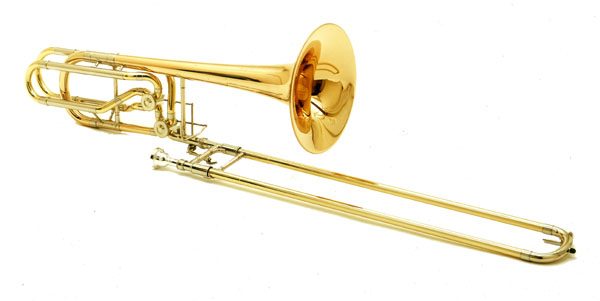
Tenor trombones and bass trombones are the two most common types of trombones. Tenor trombones have a narrower bore than bass trombones. Bass trombones are larger than tenor trombones and have a wider bore. The bore is the part of the trombone that the player blows into, and the size of the bore affects the sound of the instrument. Bass trombones also have larger bells and an extra valve or trigger, allowing them to play easier in the lower register.
Trombone mouthpieces
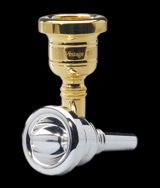
Trombone mouthpieces come in a variety of shapes and sizes, and each one produces a different sound. Mouthpieces can be made of different materials, including silver-plated brass, and plastic. The size and shape of the mouthpiece affect the tone. Mouthpieces can be purchased from all trombone instrument retailers, and it is important to find one that is comfortable for you to play. Small-bore trombone mouthpieces are typically used for jazz, while large-bore trombone mouthpieces are better suited for symphonic playing. There are many other factors to consider when choosing a trombone mouthpiece, such as the rim and cup size, backbore and your trombone model, your playing style, and most of all: your personal preferences.
Valve trombone

Valve trombones are a type of trombone that uses valves instead of a slide to change the pitch of the instrument. Valve trombones offer several benefits, including the ability to play more accurately in tune. They also have their distinct sound. Take a listen to players like Bob Brookmeyer to hear the valve trombone in action.
Alto trombone
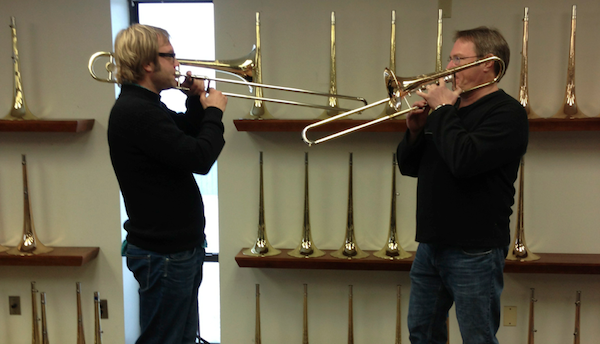
The alto trombone is a smaller, higher-pitched version of the trombone tuned in Eb. Alto trombones are typically used in orchestras and bands and usually read music written with alto clef. They have a small bore. In the picture you see Anders Larson playing a small bore tenor trombone and custom trombone maker Steve Shires playing a smaller alto trombone.
Famous jazz trombone players
Some of the most famous jazz trombone players include J.J. Johnson, Tommy Dorsey, Frank Rosolino, Jack Teagarden, Kai Winding, Slide Hampton, and Carl Fontana. These musicians are all well-known for their contributions to the world of jazz trombone playing and have helped evolve how the instrument is being played and its capabilities.
Famous classical trombone players
Some of the most famous classical trombone players include Christian Lindberg, Joseph Alessi, and Douglas Yeo. They have pushed the limits of what is possible on a trombone and defined the world of classical trombone playing.


